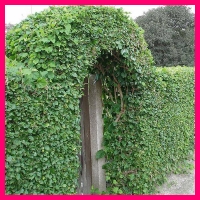| Kinds of climbing plants: Plants with twining tendrils, twine plant clinging plants, plants with Velcro, clinging to the roots |
| Flowers - Articles on flowers, plants and bouquets of flowers |
|
Kinds of climbing plants: Plants with twining tendrils, twine plant clinging plants, plants with Velcro, clinging to the rootsRegardless of if you're going to do gardening or you are a professional in this very interesting lesson, it is very important that you are well aware of the vines. Creeping plants can become the best friend any gardener, especially if you do not have a very large homestead site. After all, why should grow in width, if you can plant the plants, and they will grow up without taking this position, and in addition decorating is all around us. But worth thinking about what kinds of climbing plants are and what they need support. There are five major ways that plants can grow on the structure: with the help of antennae, entanglement, cling on stickers and holding on to the stem. This article will acquaint you with every kind of climbing plants, as well as help to understand how and where they grow. Plants twining tendrils - creepersAntennae - are small appendages that sprout from the stem of plants. Antennae almost like small stems, but they are much smaller and more flexible than the main stem of the plant. Tendrils stretch and cling to the supporting structure, obvivayas and curled around her. Peas - a climbing plant that uses tendrils to grow up. Twining stems of plants with tendrils will grow best if they sit next to a narrow base, so they can grow up, preferably with a diameter of not more than five millimeters. Simple lattice, made of narrow strips of bamboo or other thin twigs, are ideal for this. You can also easily make your own hands grid for the plant, twining tendrils. You just need to build a frame and then stretch it to a large network, or to tighten the line. Twine plants - climbing plantsPlants such as morning glory and clematis are using their leaves and stems to reach and grasp at the supporting structure. Twine plant, depending on the species, always in the direction of twine either clockwise or counterclockwise. Some vines twine around freely supporting structure, the other vice versa - very tight. You should know about a particular twine plants - they can literally strangle other living plants around them. It is also worth remembering that some plants can grow quite large and heavy, so it is important to provide them with good support. For example, wisteria - a climbing plant, which is known by the fact that it destroys such constructions as: the porch and veranda. Cling plants - climbing plantsThese plants are unable themselves to grow in design. Often, they are subject to heavy branches or spines, which they use to rely on other plants or construction. Roses and raspberries are examples of clinging plants. If you want to cling to plants grown on a grid or in the gazebo, you may need to help the plant by attaching his or tied to the constructions. However, it should be very careful so as not to tie the branches of the plant is too tight, otherwise you will be able to strangle the plant. It is necessary to search the lattice, which has special clips made for this purpose. Plants with Velcro - creepersHave you ever wondered how Boston ivy can grow up a brick wall? Well, Boston ivy is an example of Loach with Velcro, which uses small, sticky tendrils to adhere to almost any surface. When the plant with Velcro faced with an obstacle, it can easily begin to grow in the side. Be careful so as to put a plant next to the building, since there are cases where these plants are harmed masonry and other materials. Clinging to the roots of plants - climbing plantsClimbing Plants, which are used for root growth include hydrangea and English ivy petioles. In fact, these plants produce small sticky roots that grow directly from the stem. These sticky roots of the actual ability to hold on virtually any surface, smooth or porous. Clinging plants can be as harmful as the plant with Velcro, so be careful with where to plant these plants. It should also be regularly cut plants clinging roots. If you do not control them, they can very quickly get out of control. Hoti remind all visitors to its site, which is our online resource directory is implemented plant, which is a subsection of climbing plants which contains descriptions, photographs, properties, etc. Discuss creepers and ask questions about it, you can in our forum about flowers and plants. If you have a good, beautiful and interesting photos of climbing plants and flowers, then send them to us and we will publish them on our flower album. |
|
| Archive * Карта сайта * About us |
© Flowers and plants Minsk, 2009 

 Climbing plants, species of climbing plants: Plants with twining tendrils, twine plant clinging plants, plants with Velcro, clinging to the roots. In this article, about the plants a quick look at all of the above species.
Climbing plants, species of climbing plants: Plants with twining tendrils, twine plant clinging plants, plants with Velcro, clinging to the roots. In this article, about the plants a quick look at all of the above species.


